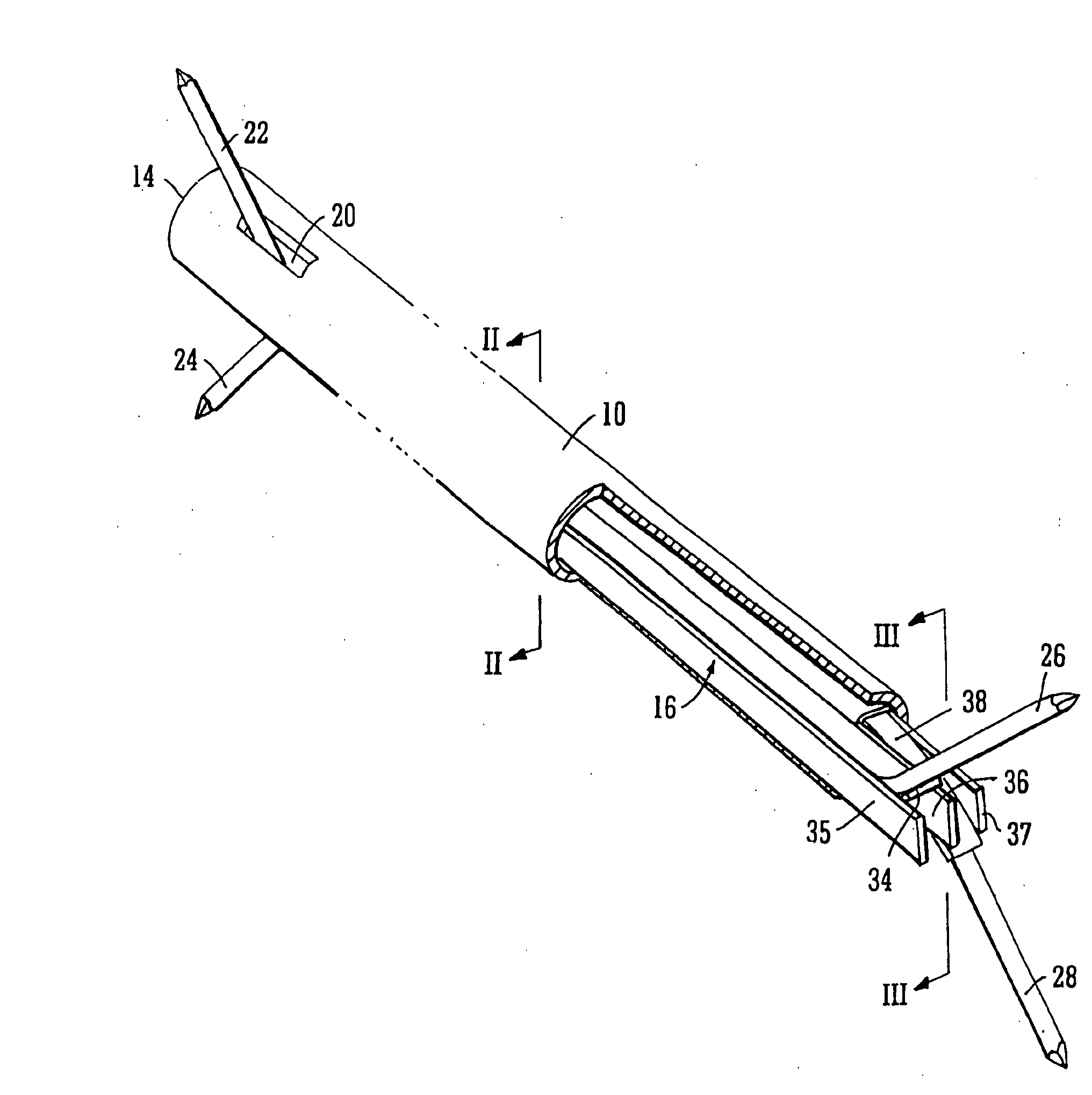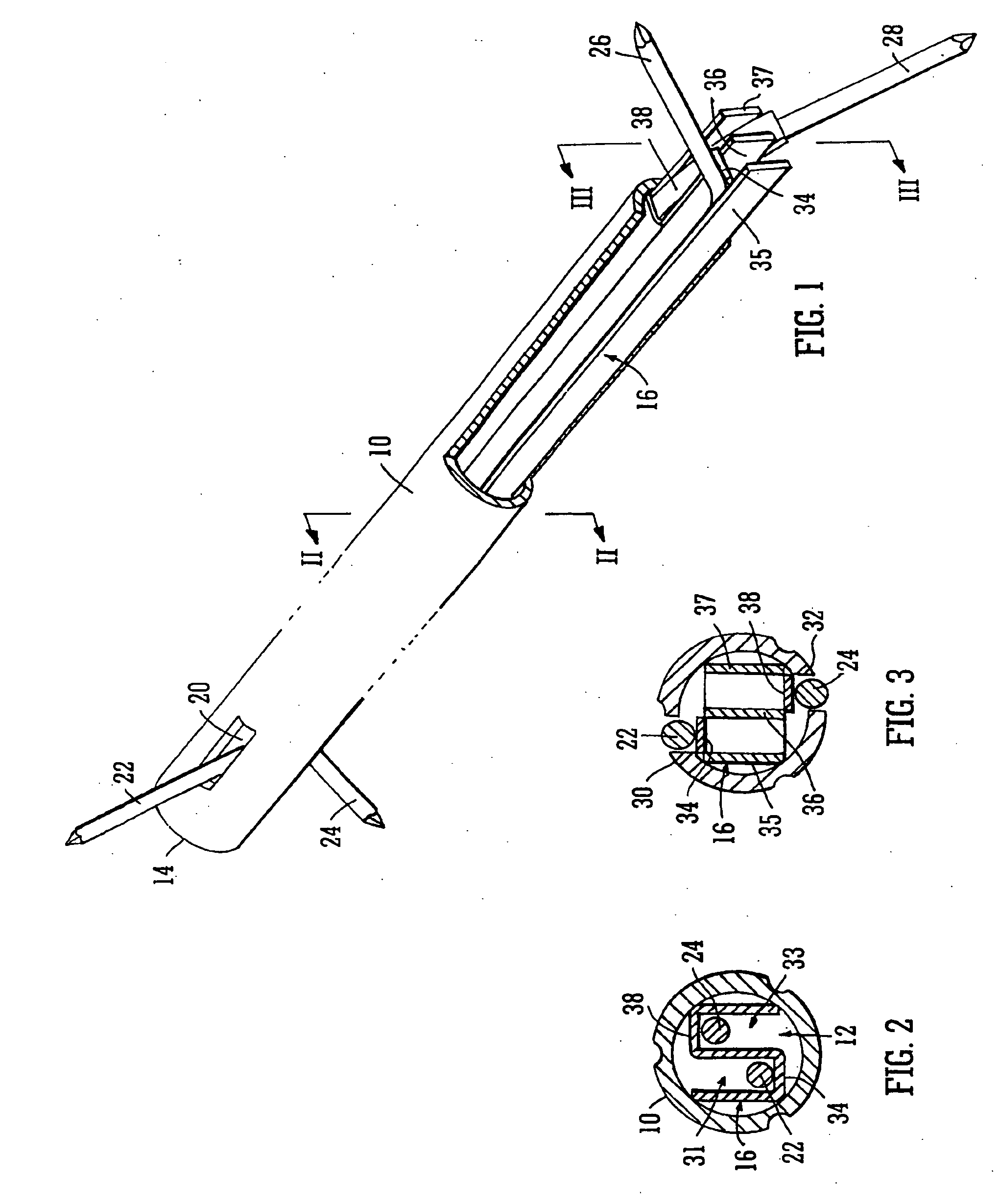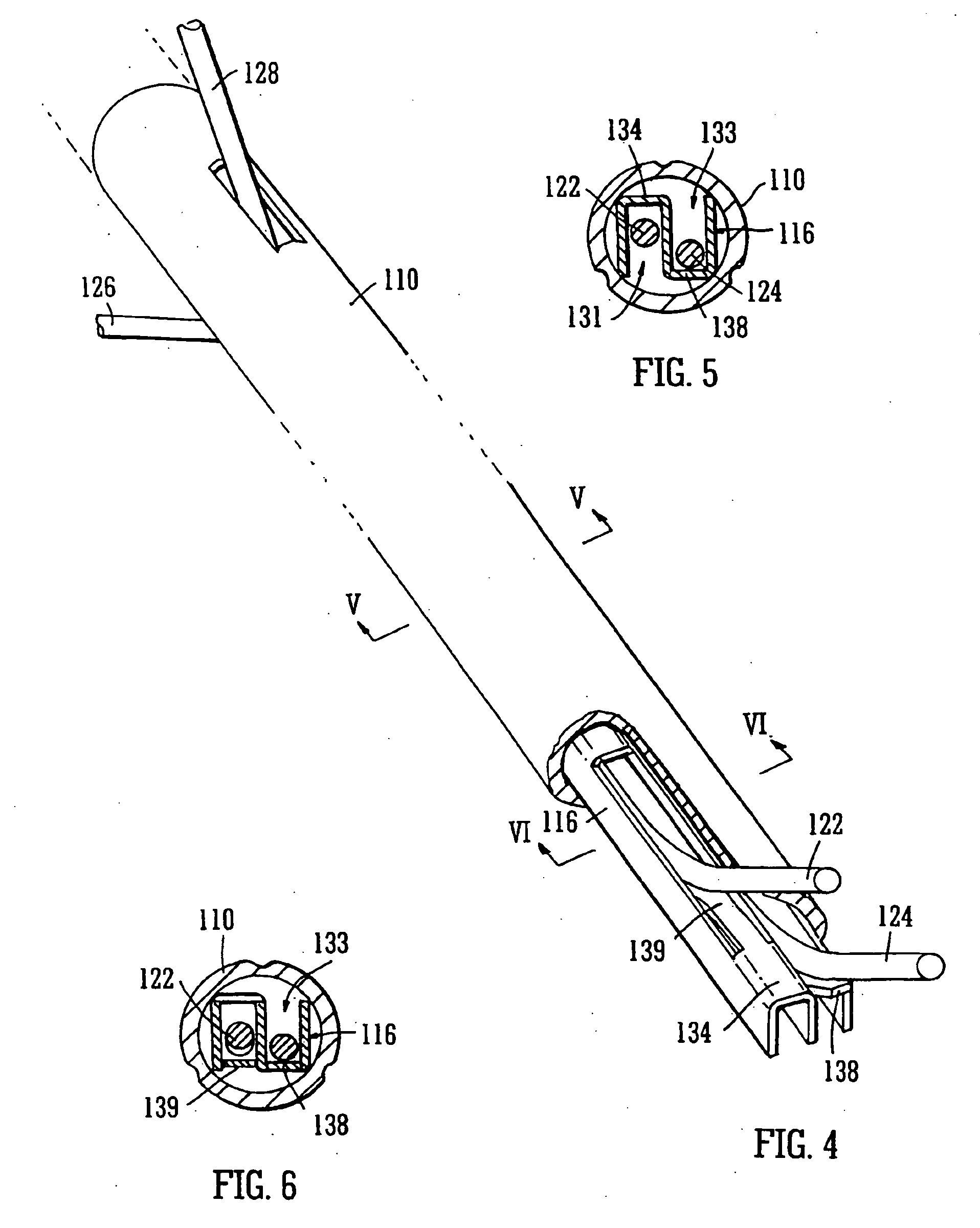Intramedullary nail
a technology of intramedullary nail and nail, which is applied in the field of intramedullary nail, can solve the problems of affecting the accuracy of surgical procedures, so as to prevent the tip of the wire from being blunted, and the surgical procedure is quick and yet highly reliable.
- Summary
- Abstract
- Description
- Claims
- Application Information
AI Technical Summary
Benefits of technology
Problems solved by technology
Method used
Image
Examples
Embodiment Construction
[0034] Referring firstly to FIGS. 1 to 3, a first practical embodiment of an intramedullary nail of the invention comprises an elongate rod 10 of stainless steel or titanium having a cavity 12 therethrough. Thus, it is hollow throughout. It has a first end 14, which may be termed a proximal end, and a second end, which may be referred to as a tip or distal end, although the latter is not shown in the drawings owing to the portion cut away to show the interior of the cavity 12. The rod 10 may taper from its proximal end to its tip, although again that is not shown in the drawings.
[0035] Two apertures, termed proximal lateral apertures, are formed in the wall of the rod 10 at a spacing from the proximal end 14. These are at substantially the same axial position in the rod, but a opposing positions circumferentially, and only one of these apertures 20 is apparent in FIG. 1.
[0036] Two generally corresponding apertures 30, 32 termed distal lateral apertures, are formed in the wall of t...
PUM
 Login to View More
Login to View More Abstract
Description
Claims
Application Information
 Login to View More
Login to View More - R&D
- Intellectual Property
- Life Sciences
- Materials
- Tech Scout
- Unparalleled Data Quality
- Higher Quality Content
- 60% Fewer Hallucinations
Browse by: Latest US Patents, China's latest patents, Technical Efficacy Thesaurus, Application Domain, Technology Topic, Popular Technical Reports.
© 2025 PatSnap. All rights reserved.Legal|Privacy policy|Modern Slavery Act Transparency Statement|Sitemap|About US| Contact US: help@patsnap.com



